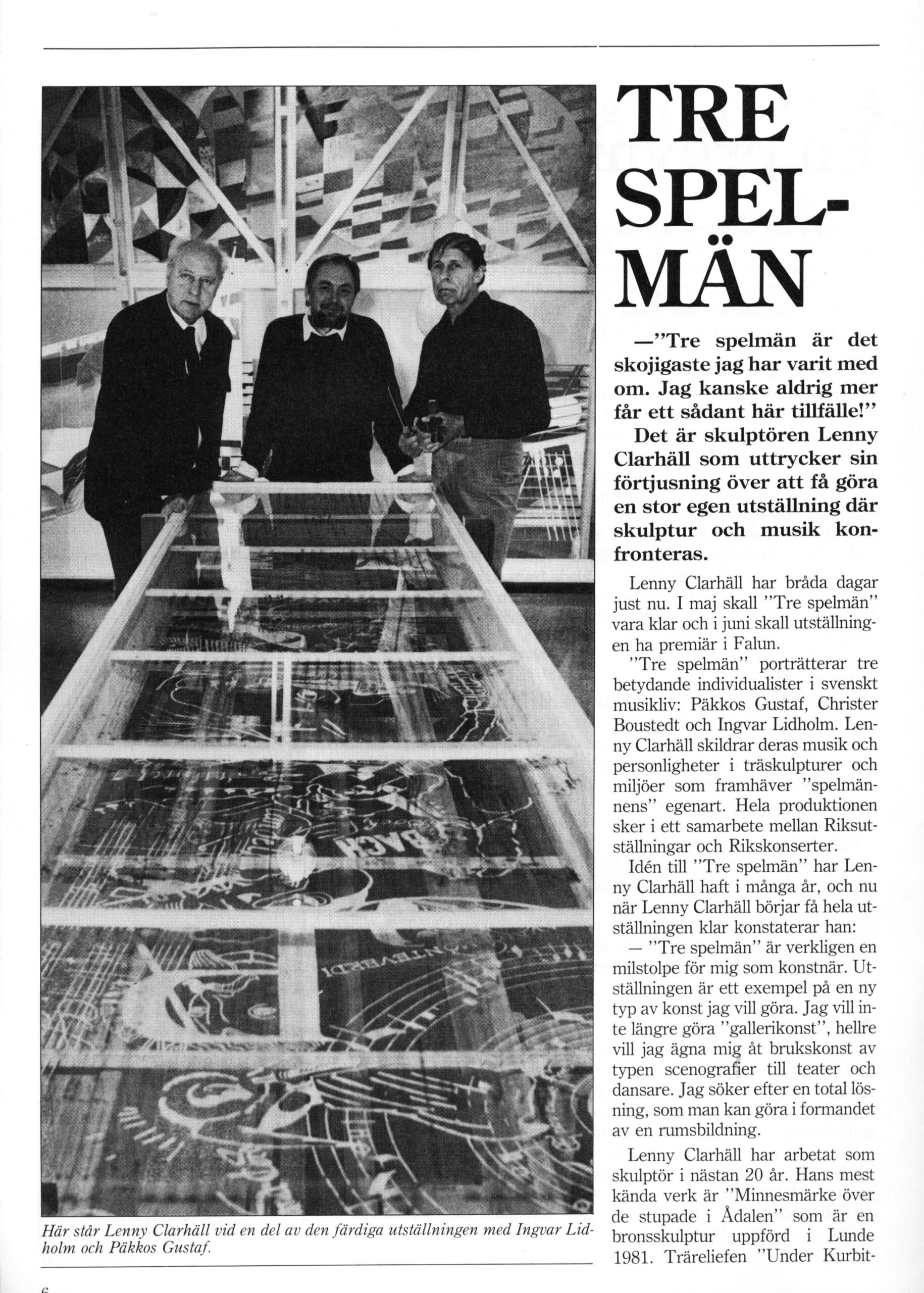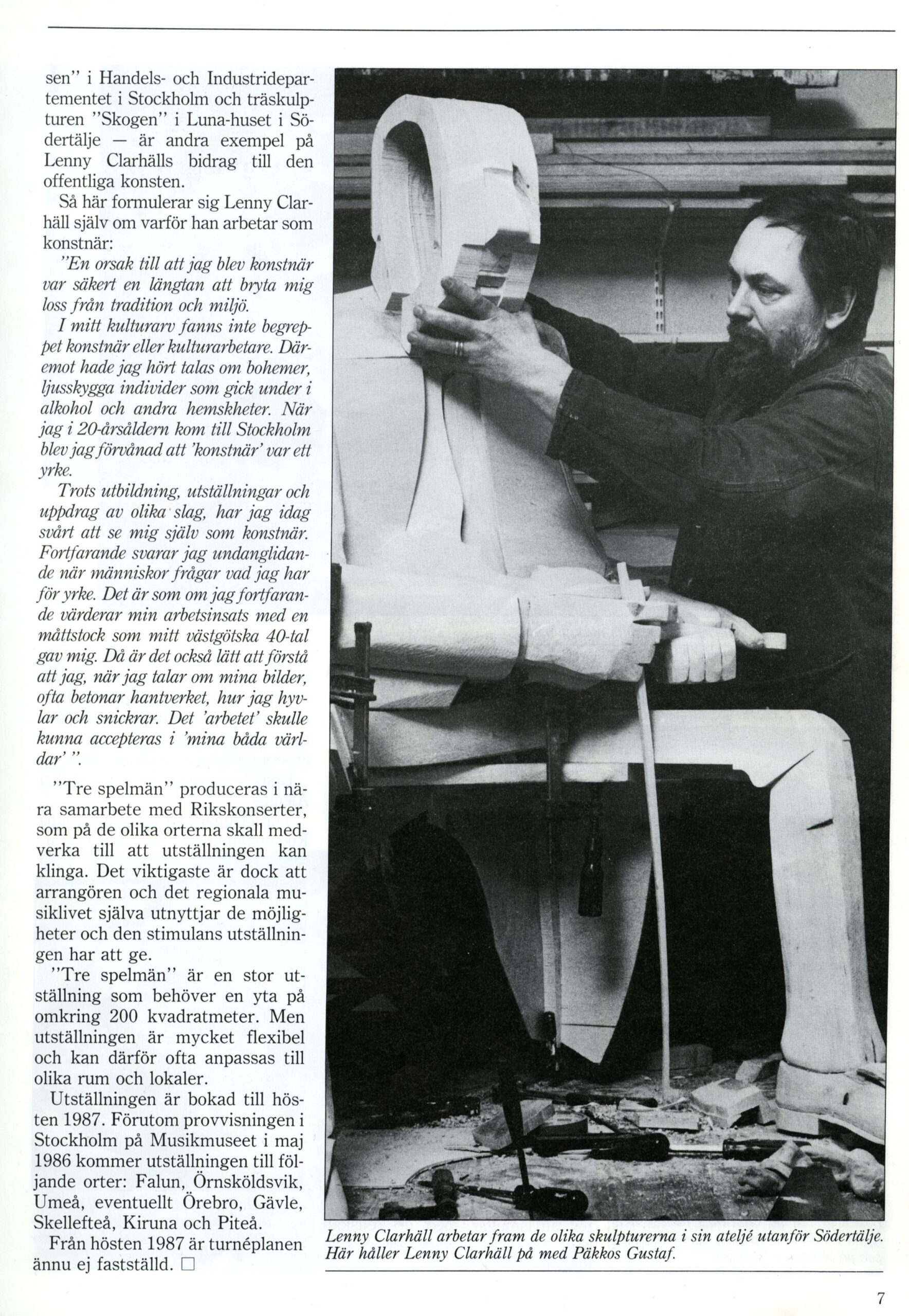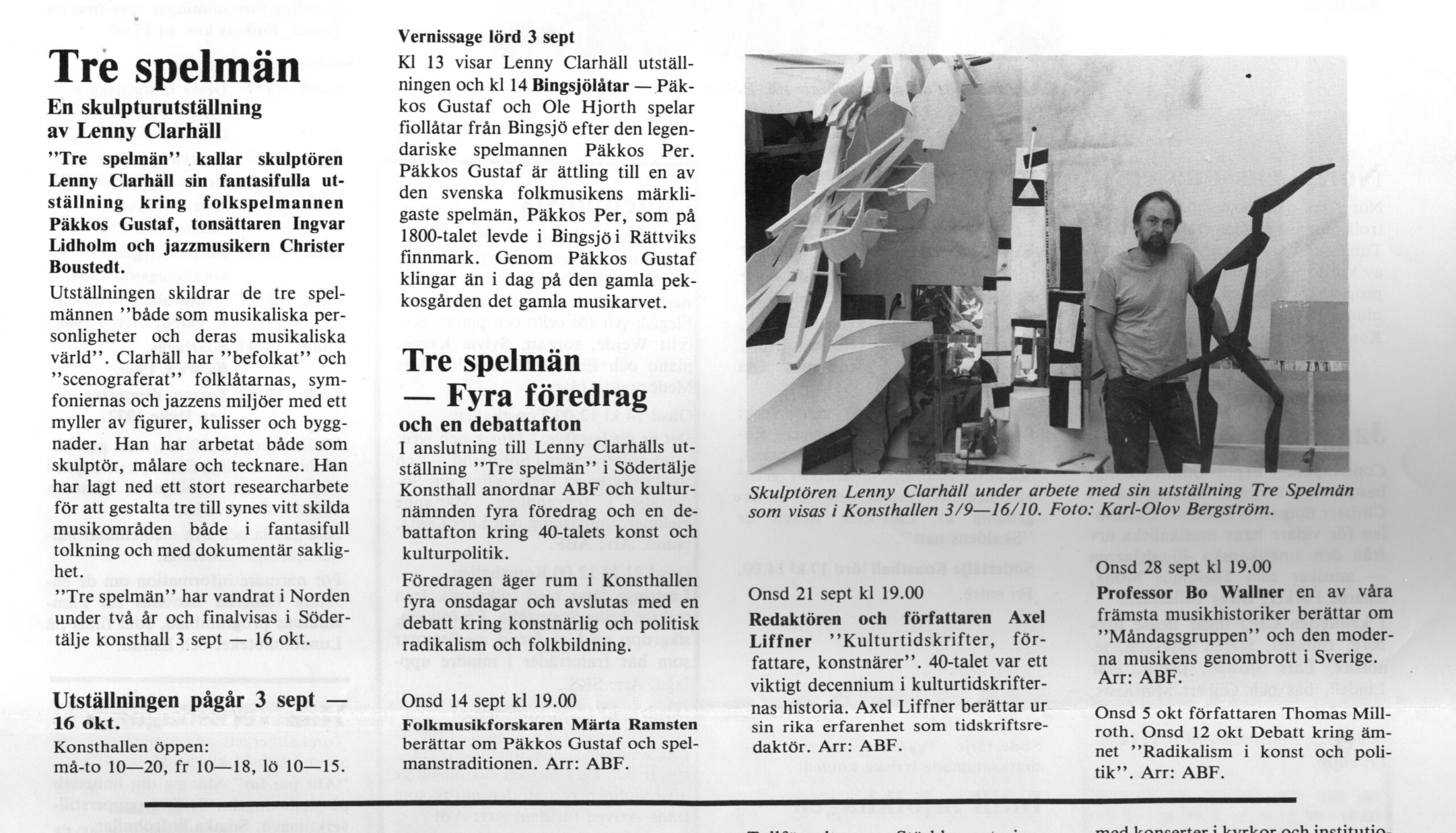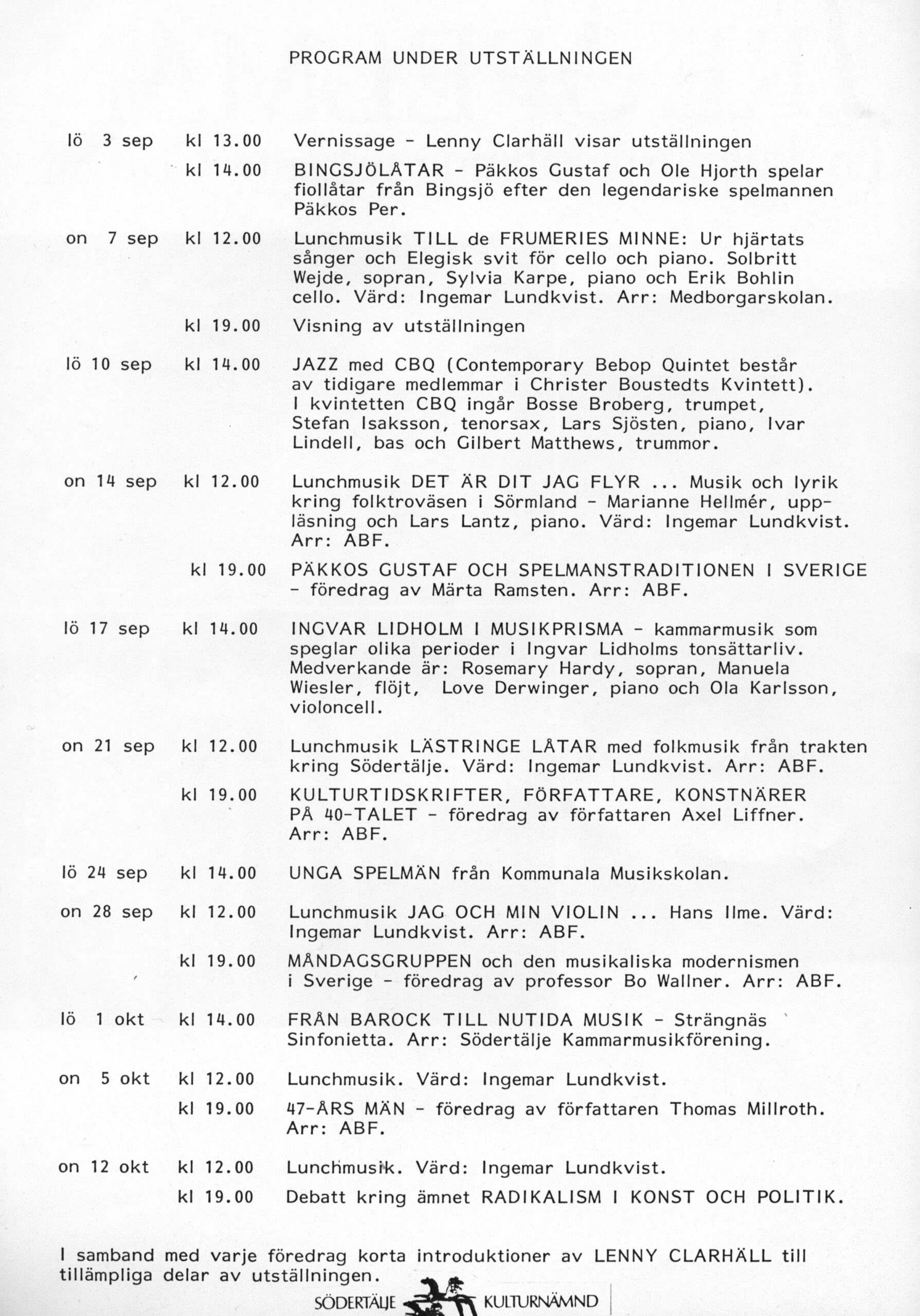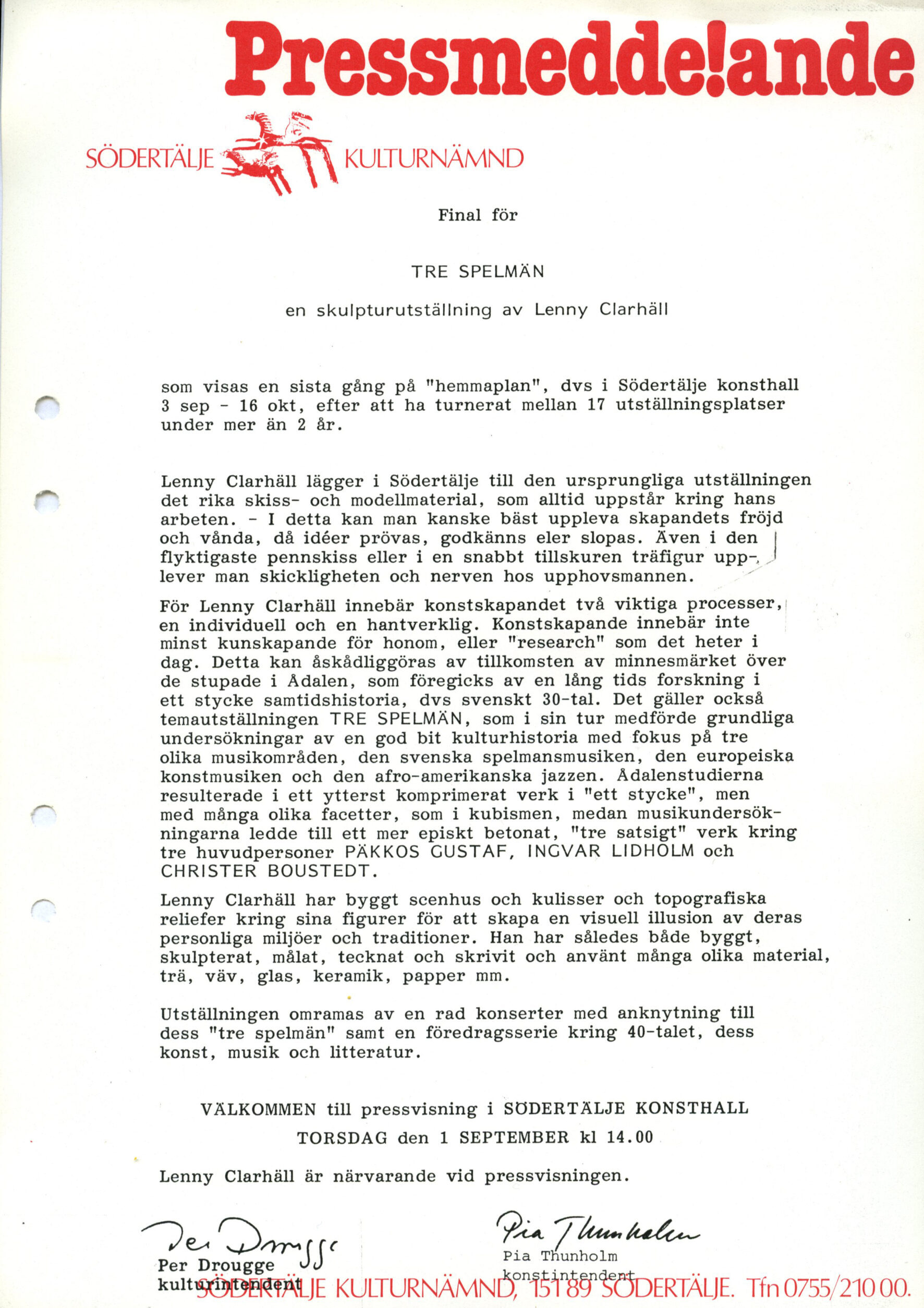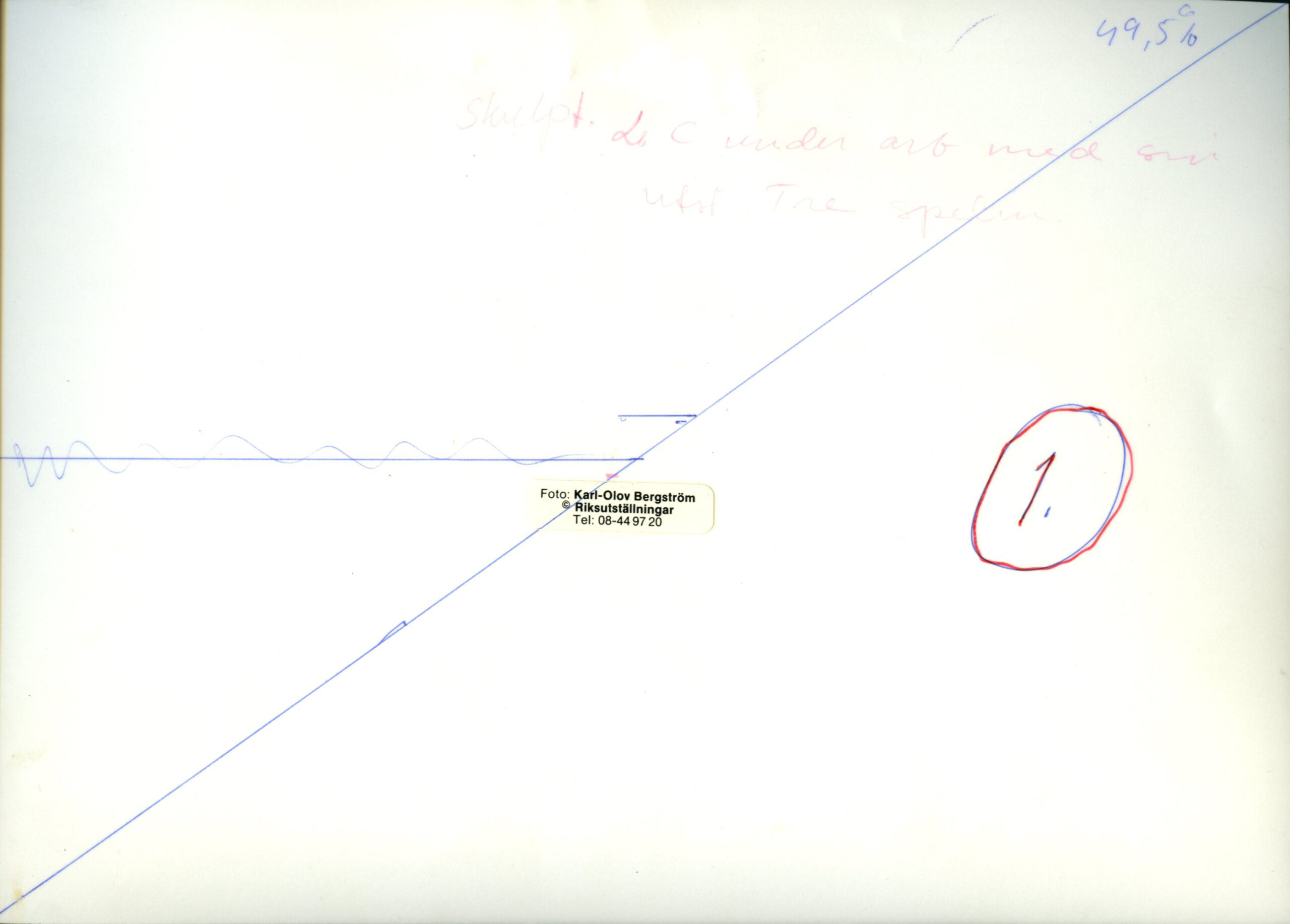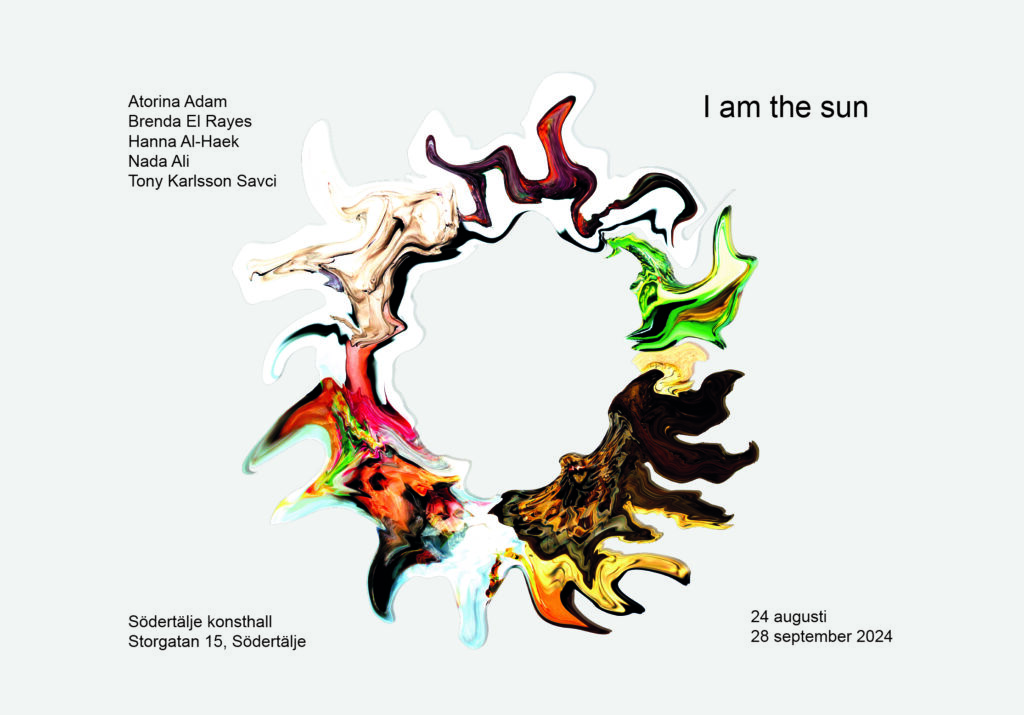
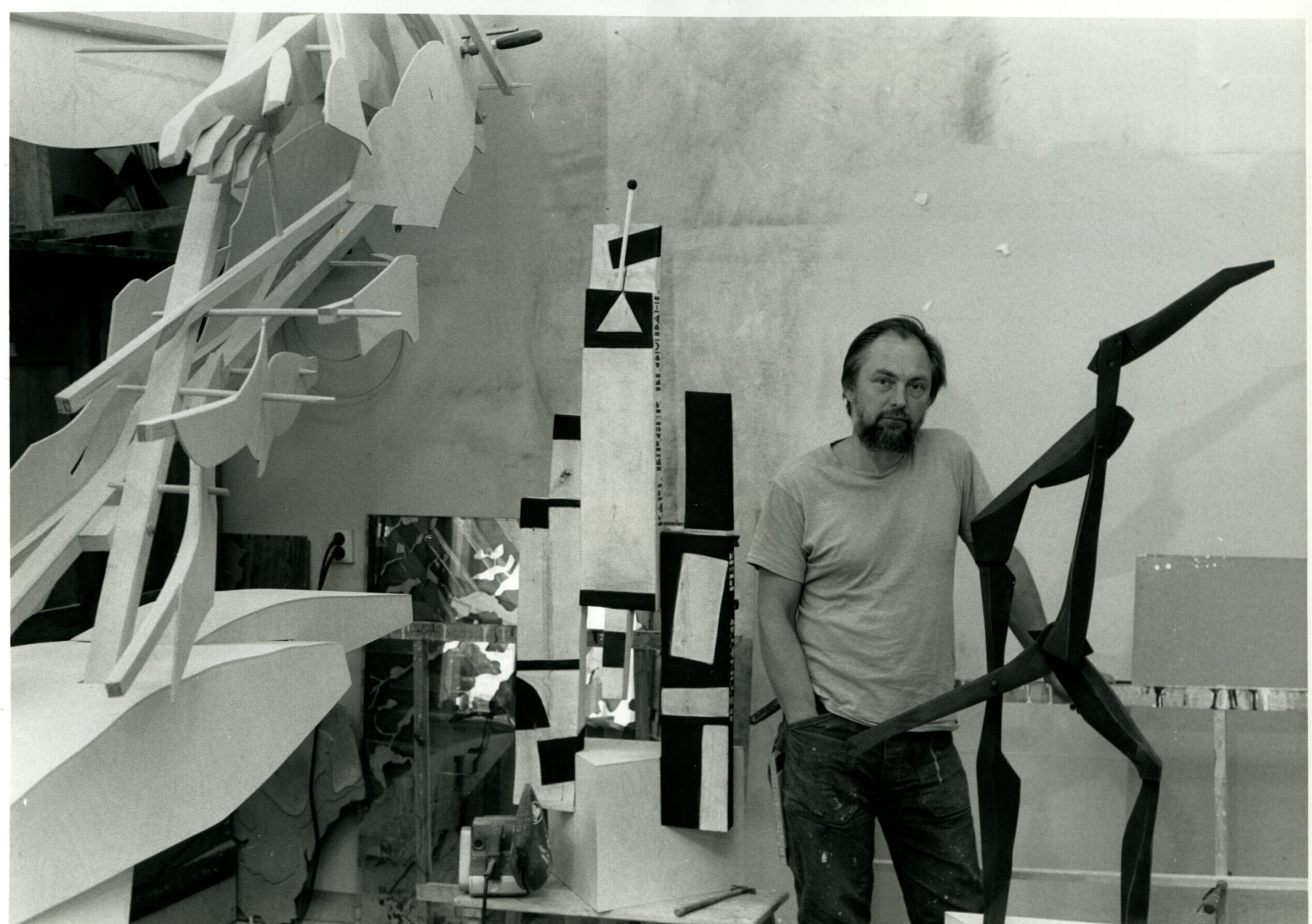

Three fiddlers were produced by Riksutställningar and Rikskonserter. The time before the opening at Södertälje konsthall, the exhibition had toured seventeen places, over a period of two years. Södertälje konsthall was the last stop, which was at Lenny Clarhäll’s home ground. He had his home and studio in Hölö, nearby Södertälje. He worked on his art on the three fiddlers here.
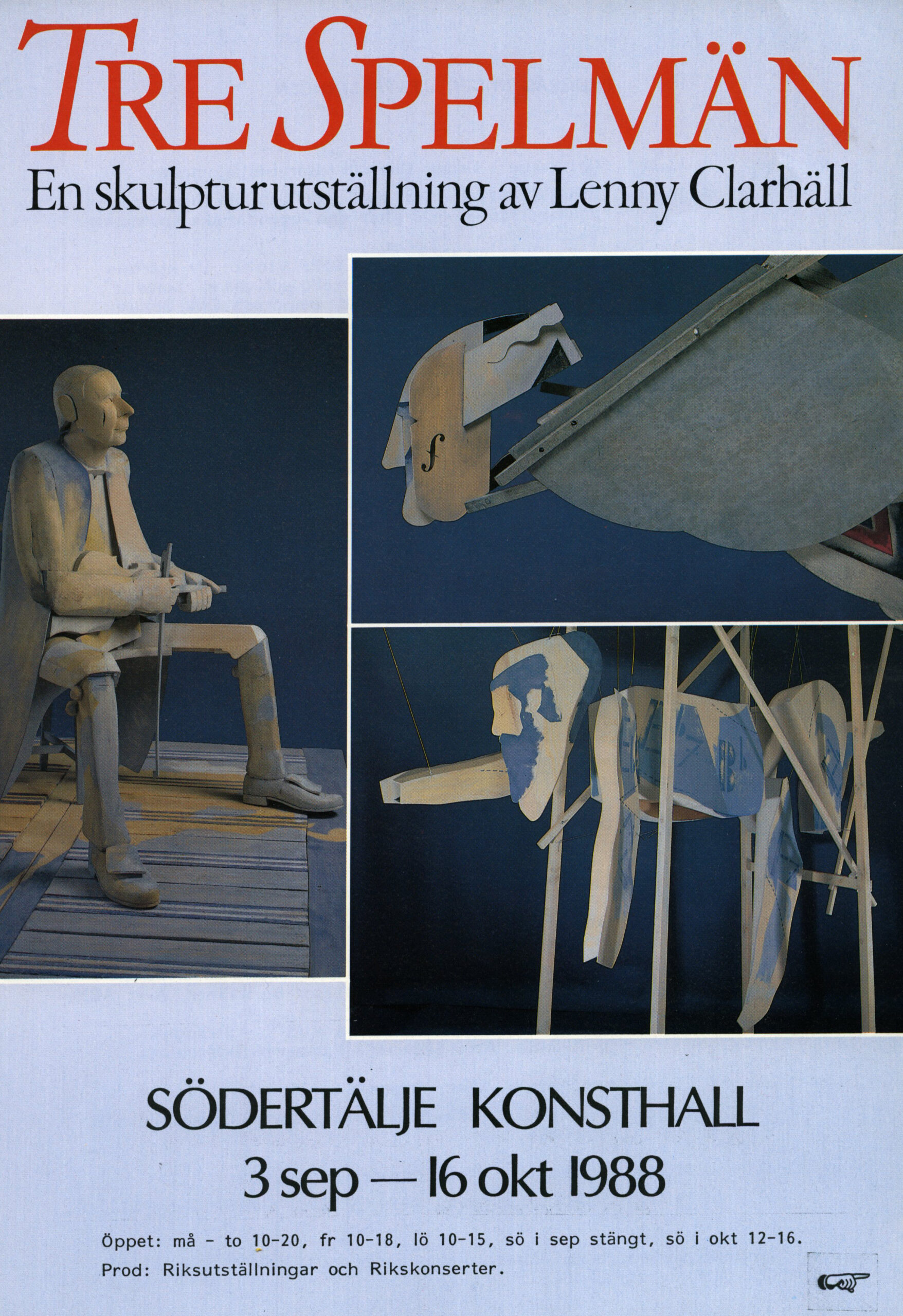
On the opening day, September 3, the art gallery director Pia Thunholm welcomed everyone. The chairman of the Culture Committee, Stig Parborn, gave a short speak. Lenny Clarhäll then held a presentation for the audience. Then there were Bingsjöl songs on violin with Päkkos Gustaf and Ole Hjort after the legendary fiddler Päkkos Per’s compositions. Effective to have one of the three portrayed musicians live, played in the middle of the exhibition.
Clarhäll’s exhibition brought together three very different genres in music. The personalities he portrayed were the composer Ingvar Lidholm, the jazz musician Christer Boustedt and the folk music musician Päkkos Gustaf. As so often, Clarhäll’s way of working included careful research work. The documentary and the factual are an important part in harmony with the imaginative artistic expressions. At Södertälje Art Gallery, they had chosen to do something different in relation to the original exhibition. Clarhäll’s artistic processing was picked up in the form of the sketch works and models that preceded the finished works.
A solid program with many concerts and lectures in the art gallery came with this exhibition period. ABF, together with the art gallery, arranged a lecture program with four meetings, which ended with a debate evening on the theme of art and cultural policy in the 1940s. On September 10, there was jazz with CBQ (Originally Christer Boustedt’s quintet) and on September 17, there was music by Ingvar Lidholm.
Södertälje konsthall´s Per Drougge and Pia Thunholm summarizes in the press release:
Lenny Clarhäll has built stage houses and scenery and topographical reliefs around his characters to create a visual illusion of their personal environments and traditions. He has built, sculpted, painted, drawn and written and used many different materials, wood, fabric, glass, ceramics, paper etc.
Sources: The Art Gallery’s archive folder, text and compilation Anneli Karlsson
